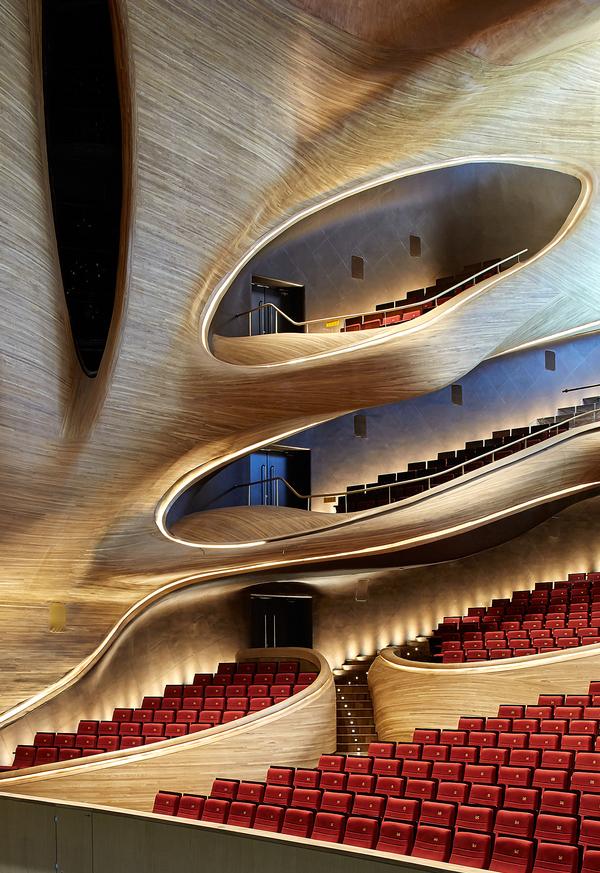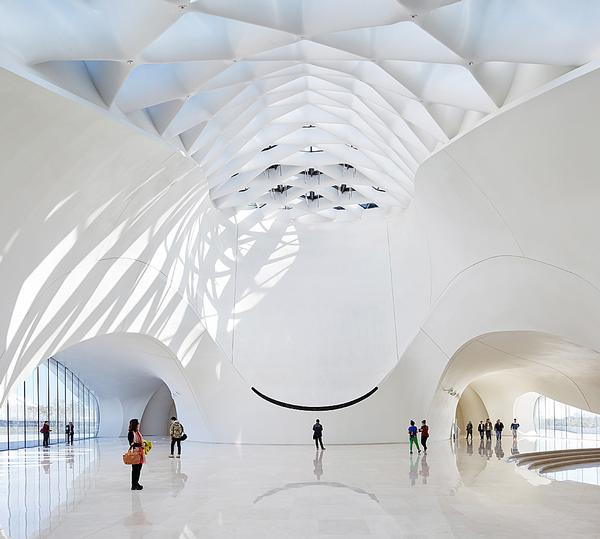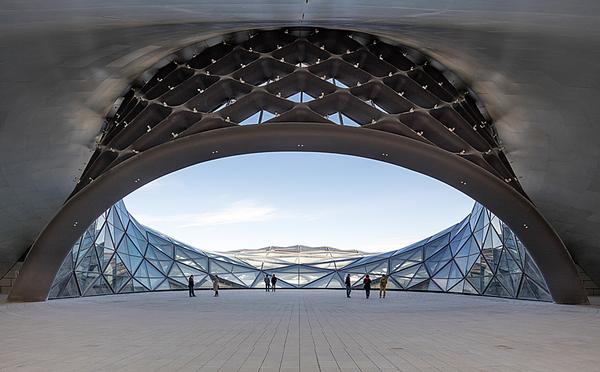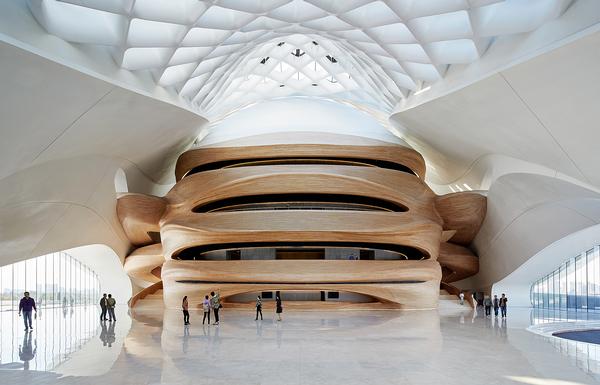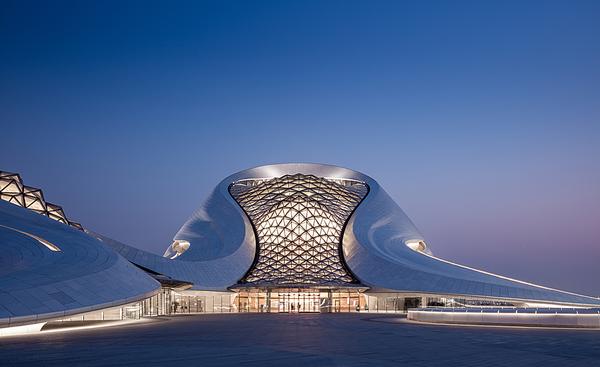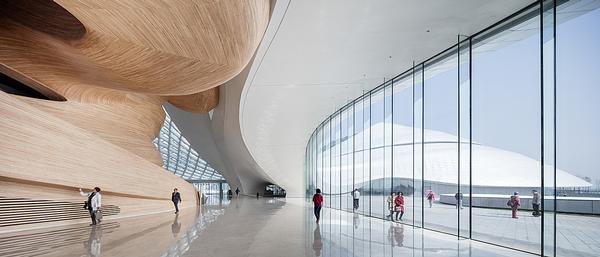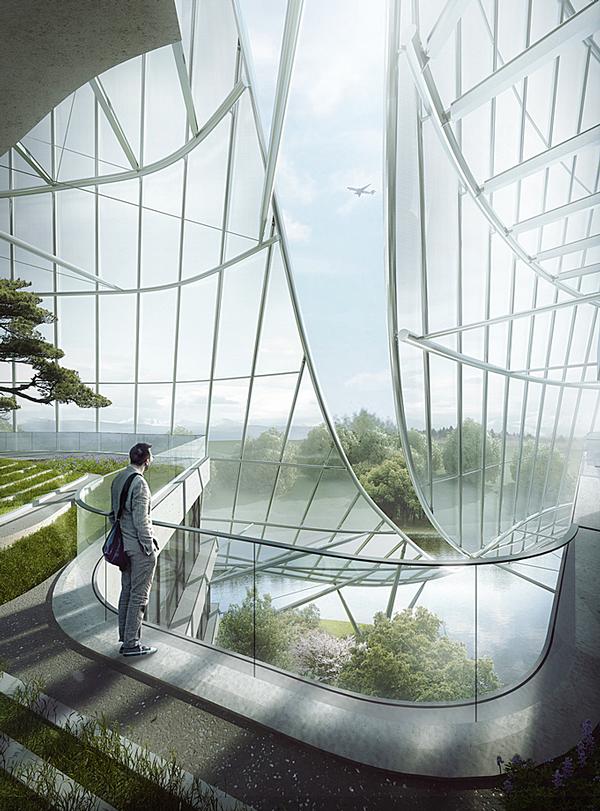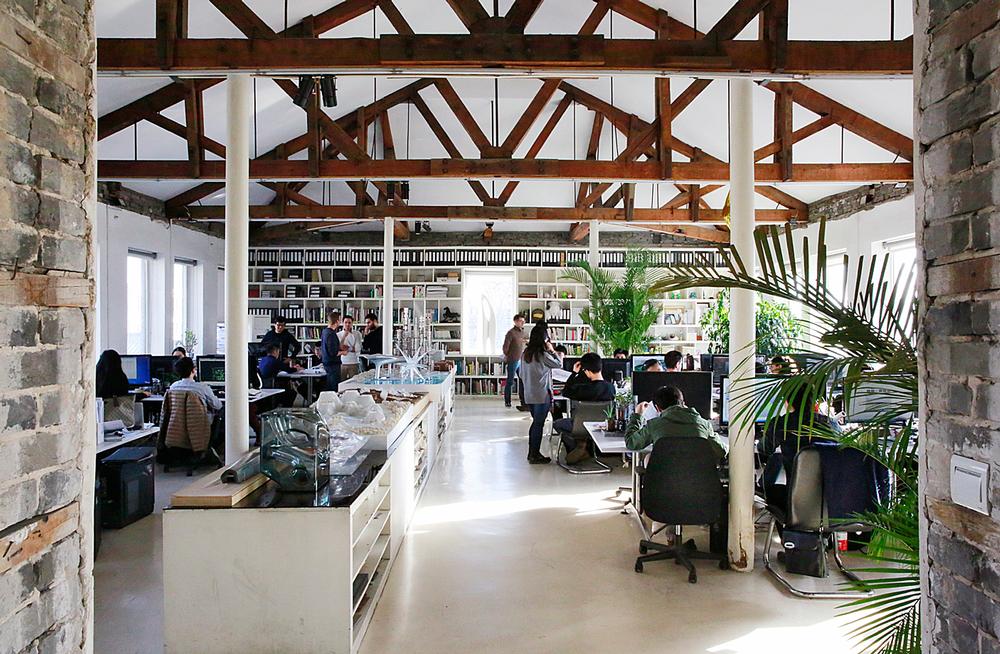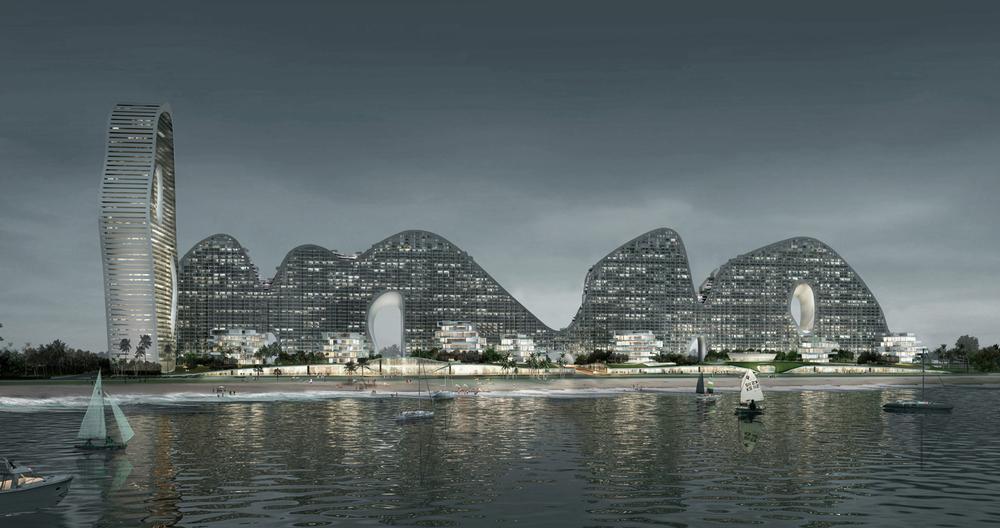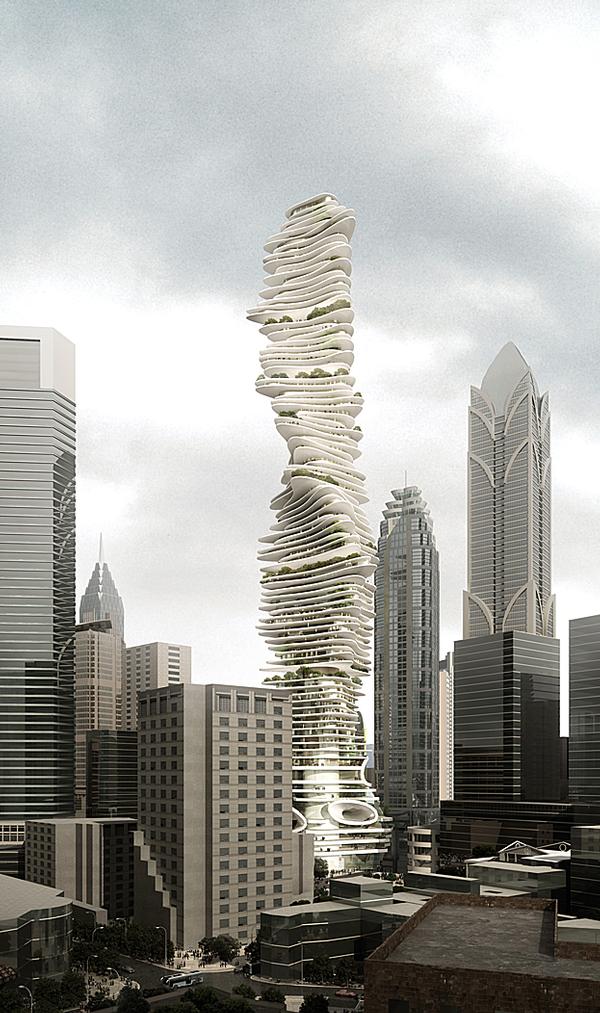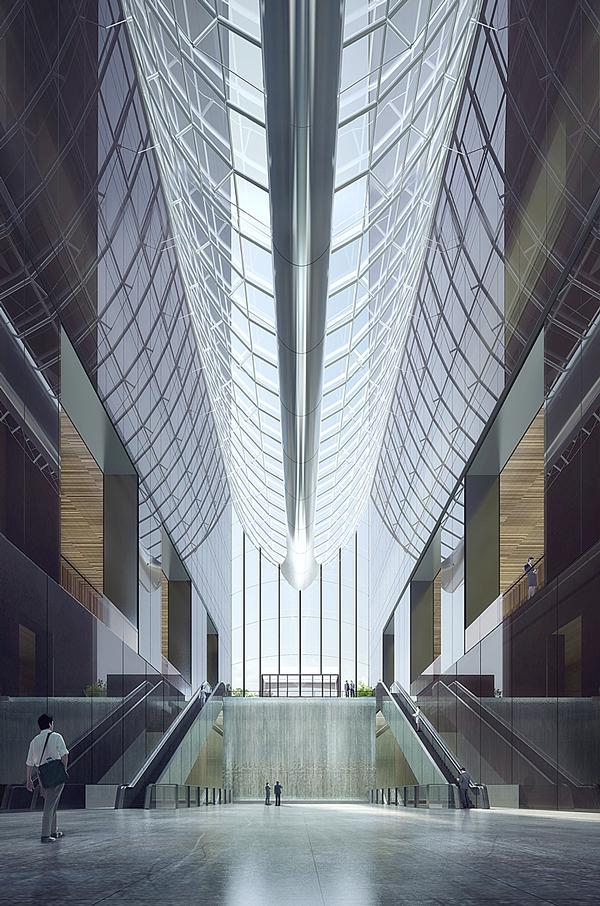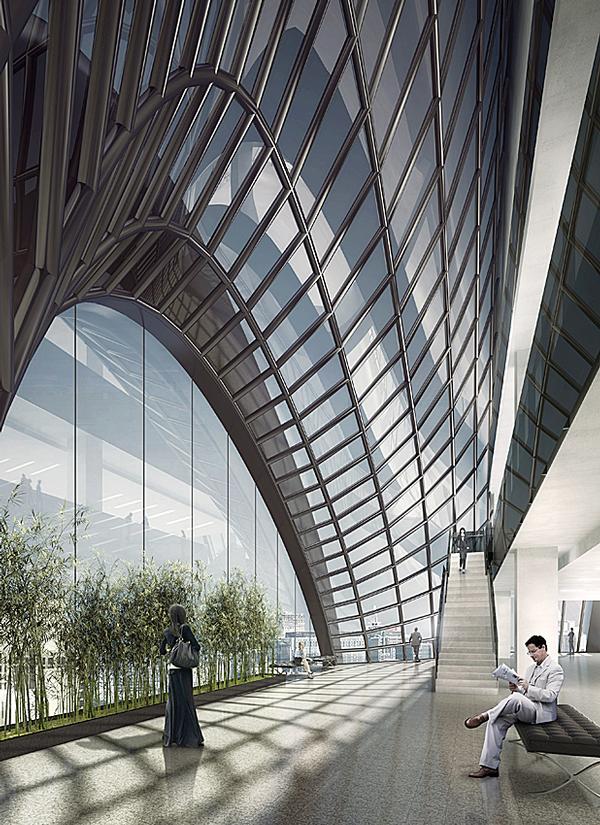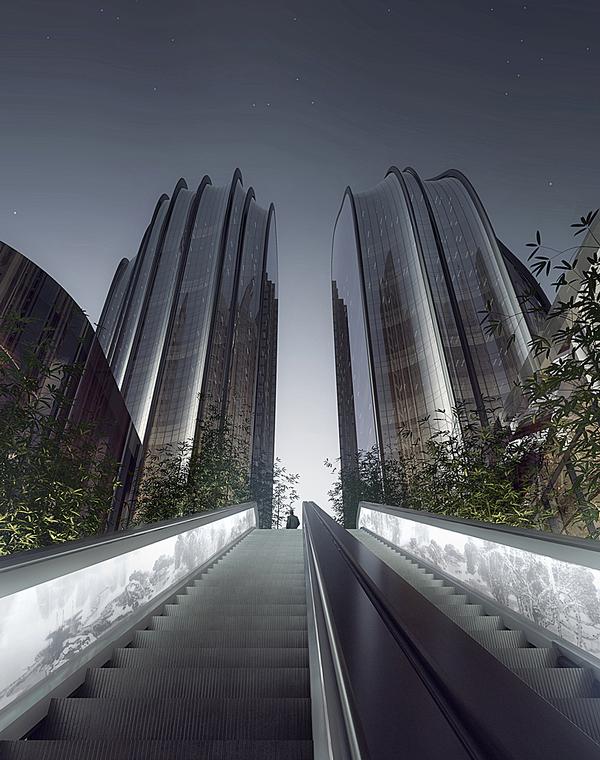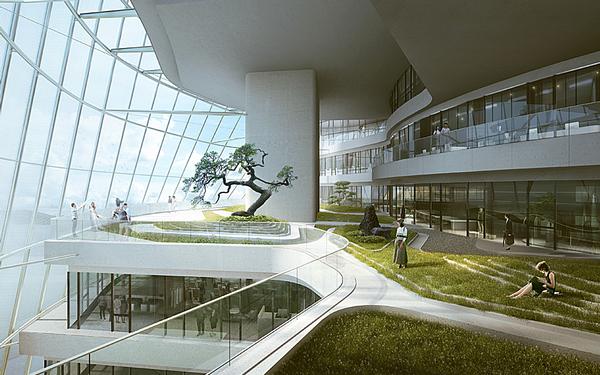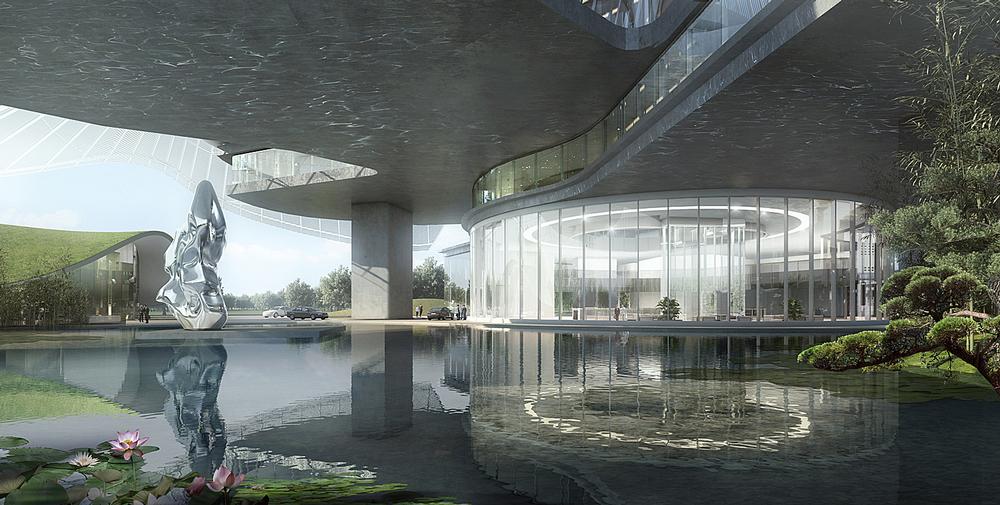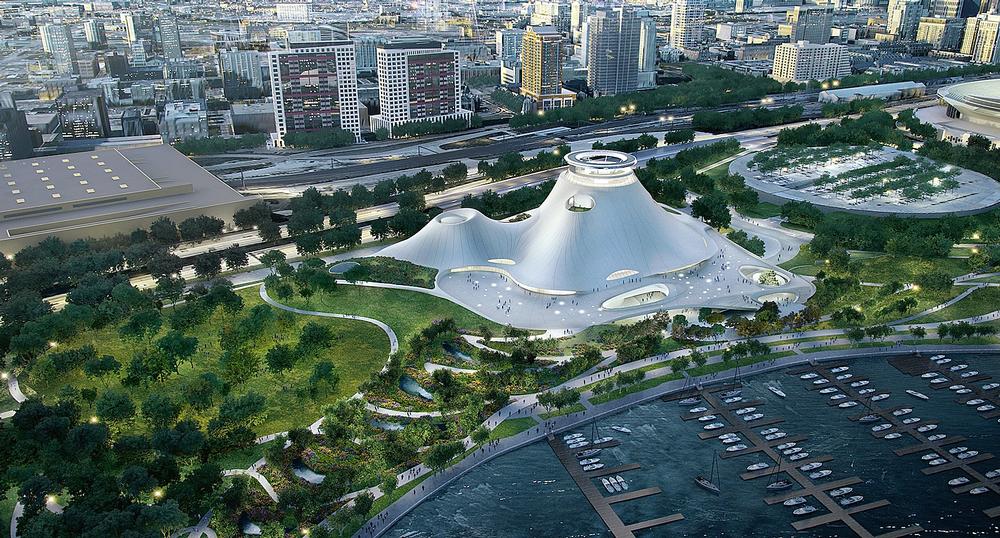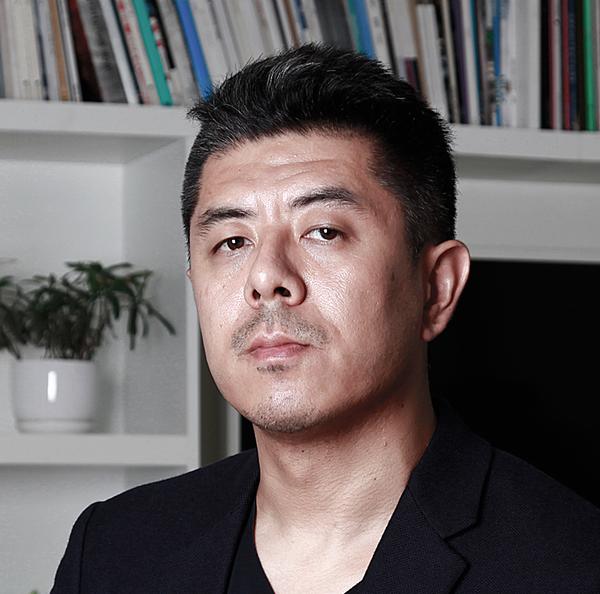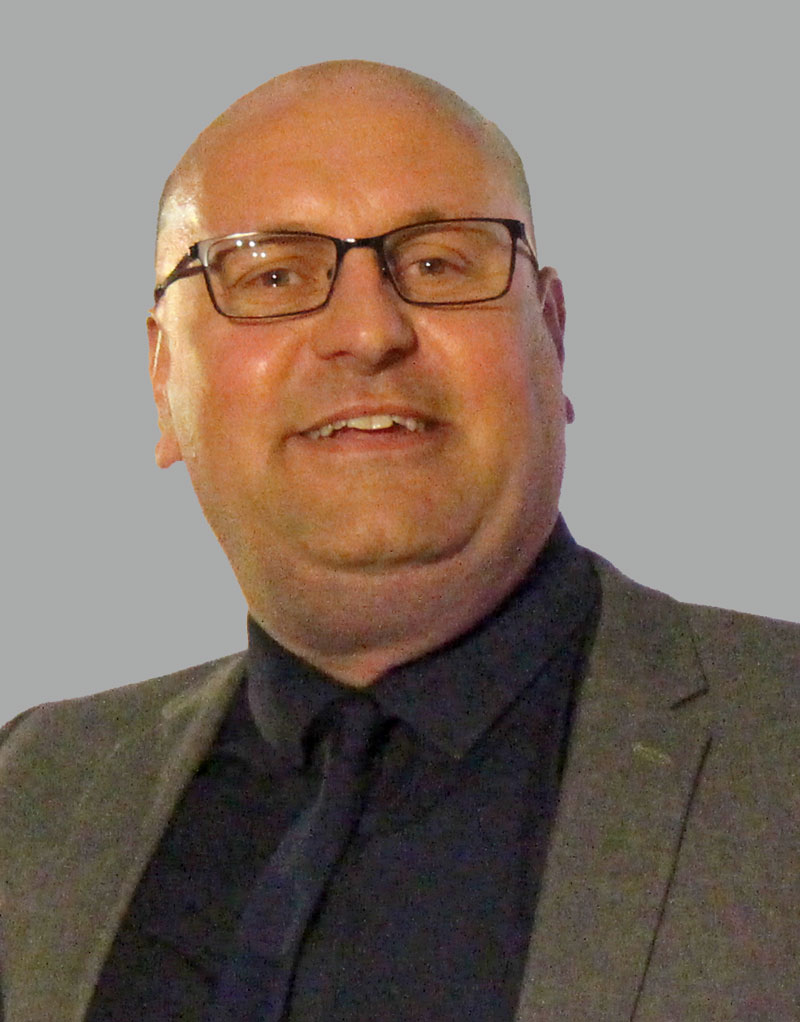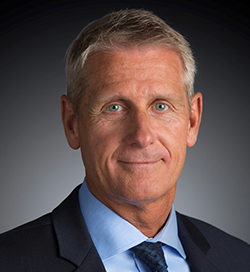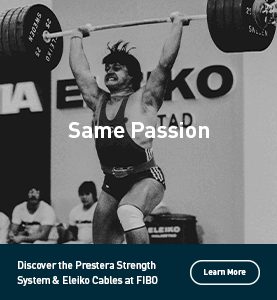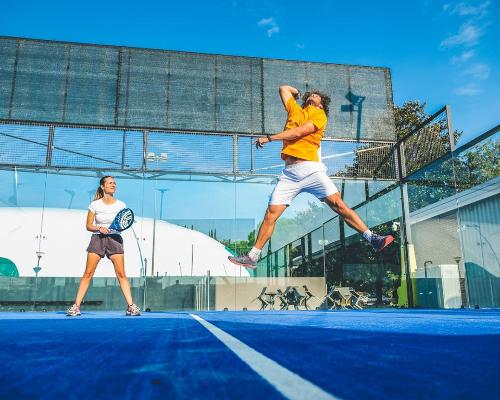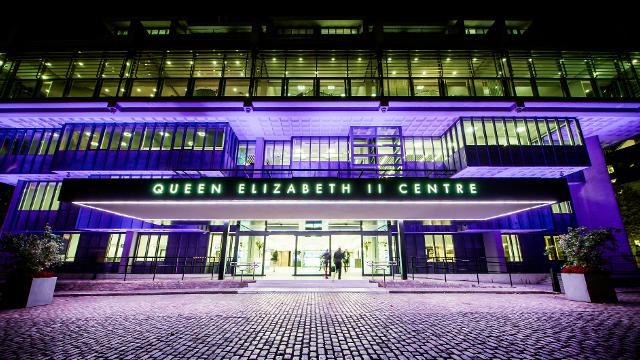features
Method in the MADness: Ma Yansong on battling conservatism
The founder of pioneering architecture studio MAD tells Kim Megson about studying under Zaha Hadid, developing his organic approach to design and the need to battle conservatism
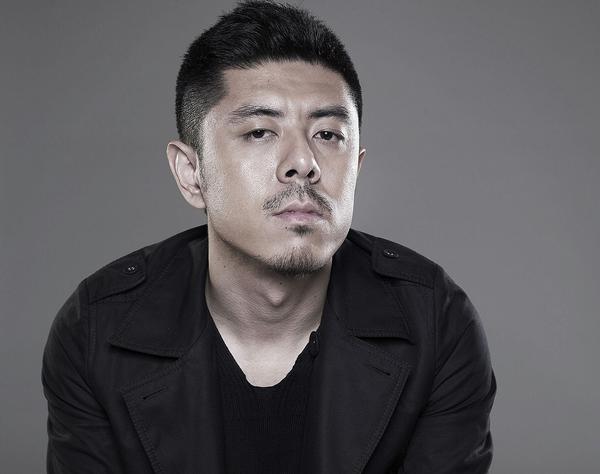
Chinese architect Ma Yansong is the rising architectural star at the helm of MAD, the Beijing studio building a reputation for their futuristic sculptural buildings and boundary-pushing ideas.
Ma founded MAD in 2004, but only 12 years on, the practice have already developed a wildly diverse and eye-catching portfolio of built and unbuilt work, and opened offices in Los Angeles and New York. Generally accepted ideas about what is architecturally possible are gleefully cast aside; in MAD’s world, art museums are imagined as vast water-borne islands, tree-topped forest towers can stretch far into the sky and high-density high rises are sculpted to climb and fall like rolling hills.
But if there’s madness at MAD, there’s certainly method in it. In fact, the studio are on a roll. Last December they finished the acclaimed Harbin Opera House, their largest completed project to date. Since then they have won a competition to design their first European project – a curving, asymmetrical residential scheme in Paris – and exhibited at the 2016 Milan Design Week. They’ve completed a kindergarten in Japan, started work on a design centre for one of China’s biggest fashion companies, and enjoyed the continuing support of Star Wars creator George Lucas – who is trying to build their sci-fi-tinged vision for his Lucas Museum of Narrative Art.
Creating form
Despite being hotly tipped as an architectural superstar in the making, Ma’s success hasn’t gone to his head. When we meet he’s polite, thoughtful and generous with his time; a figure of composed cool in his open white shirt and designer sunglasses.
Nothing much seems to faze him. We’ve scheduled to meet after a panel discussion where he’s due to speak, but a mishap with his taxi means he arrives late to the event. He seamlessly and articulately joins the debate halfway through, injecting some much needed interest into what has been a fairly dry affair. Later, after our interview, he’s asked by a potential client to present a design on the spot, which he promptly sketches out on a nearby napkin.
So what guides Ma’s design journey as a project evolves from napkin to drawing board to a building of bricks and mortar (and, in MAD’s case, a hundred materials besides)?
“Architecture is creating an experience, and I think the experience is like a narrative,” he explains. “That is something very fundamental to this profession. It can channel your hate, your love and all the other universal human emotions. So being an architect is like you’re an actor, and you control how you want people to feel. For me, creating form is like an acting technique.”
For MAD, whatever the size of the project, form has always been key; from the mountainous exterior of the opera house to the undulating curves of the China Wood Sculpture Museum in Harbin, the horseshoe-shaped Sheraton Hot Springs Hotel in Huzhou, and the forthcoming Xinhee Design Center in Xiamen, which will be shaped like a star.
“We should always be talking about the shape of the buildings around us,” Ma says. “And the buildings around us should be more elegant. Some people say that the space you create is the most vital part of the architectural experience. While I agree it’s very important, it is the visual aspect of buildings that is unavoidable. We can’t forget that.”
Moving beyond nature
One theme that unites most of Ma’s projects is their interaction with the world around them; particularly the way in which they reflect the natural world, even in the densest of urban environments.
“Our relationship with the physical environment and nature should be the main topic now,” says Ma. “The challenge is to make built environments more human and yet make sure nature can co-exist with the high density structures.”
Of course taking inspiration from the natural world is nothing new – I’ve seen many hundreds of press releases describing how a planned resort, museum, stadium or spa is “inspired by nature”, usually without much justification – but few architects approach the concept in the way that Ma does.
“‘Nature’ in my sense of the word is a cultural thing,” he explains. “It’s more than just thinking about green architecture and sustainability. Instead it has a more spiritual and poetic meaning. I’m talking about referencing nature even if there are no trees and there is no grass – and at the current stage I’m actually trying to not put many trees in my buildings. Instead it’s all about the space. What can you see? How does it make you feel? How does the architecture itself make the urban skyline more nature-like?”
Harbin Opera House is a case in point. Ma imagined the building as a mountain surrounded by the wetlands of the Songhua River. The façade was designed as a response to the region’s untamed wilderness and chilly climate, with its smooth white aluminium walls twisting and turning as if sculpted by the water and wind. Meanwhile, hidden pathways carved into the building were added so that even non-paying visitors can ascend the structure as if it was a natural form.
Ma says that rather than copying a specific mountain or hill, his idea was to draw upon the unpredictability and abstract shape-making of the natural world. He compares his approach to traditional Chinese painters, “who painted mountains without ever directly copying nature.”
“This is what architects should do,” he elaborates. “We can learn from nature and then move beyond it. If you look at the ocean, it’s beautiful. But if you live by the ocean you will get tired of it eventually. We have the ability to be inspired by nature, but then create something a little bit different.
“So with my work, some people say ‘oh, he’s just drawing a mountain’, but you couldn’t find a mountain like that in real nature. That’s from my imagination, and so it becomes different and unique from other urban spaces. In the future I want to create this on an urban scale.”
Combating conservatism
This belief in the power of large organic forms has won MAD accolades, prestige and a lot of work, but also its share of difficulties too. For example, the studio’s museum for George Lucas – shaped somewhat like a Star Wars spaceship, or perhaps one of the buildings in Lando Calrissian’s Cloud City – has divided opinion, with critics describing it, among other things, as an “amorphous, land-eating colossus” and “a palace for Jabba the Hutt.” The building will no longer be built in Chicago following protests from local group Friends of the Park about its impact on the land next to Lake Michigan.
So how does Ma respond to those adverse to his particular style of architecture?
“I think there’s a certain community that has become too conservative now, which is a shame,” he says, with a shrug. “It’s interesting, the same people who are afraid or nervous about certain new things also often criticise conservatism and cities always doing the same things with their architecture. Progressing beyond that is just a matter of the speed of change, how much these people can take and our ability to judge the right thing to do. It’s always the same when we’re talking about the future. There’s a risk, but we have to trust our instincts.”
This desire to push boundaries is perhaps the legacy of Ma’s time studying under Zaha Hadid at Yale, and later working at her London office in the days before MAD. Hadid’s own bold ambition and uncompromising approach often meant it took years for the rest of the world to catch up and understand what she was trying to achieve.
“Zaha was an artist, so controversy was part of her life and everything was based on how people judged her taste,” he reflects. “She had such a strong and independent sensibility, you either like it or you hate it. But Zaha’s career – from being very far outside the mainstream to becoming a widely celebrated figure towards the end her life – already shows the transformation in our society. Her work, as well as the work of others like Frank Gehry, shows that architecture really needs diversity, but also needs to be sensitive to the future.”
Following Hadid’s death, Ma released a tribute in which he praised her battle for progress and remarked that “she loved and embraced the world with sensitivity and criticality.” This is something he aspires to achieve in his own body of work.
“We’re always looking back and questioning,” he offers, when asked to summarise his architectural philosophy. “Questions like why did some fantastic gardens or cities become cultural heritage? What can we learn from them? How can we be inspired by them to create better future cities?
“I think we at MAD all want to look to the past, and then find another angle to create a fresh perspective on the future.”
A new urban landscape
Construction has begun on MAD’s Chaoyang Park Plaza, a Beijing project that creates a dialogue between natural landscapes and the urban realm. Composed of over 120,000sq m (1.3 million sq ft) of leisure, commercial, office and residential buildings, the plaza is inspired by the tall mountain cliffs and river landscapes of China. A pair of asymmetrical towers will create a dramatic skyline in front of Chaoyang Park. The shape of the exterior glass façade will evoke ridges and valleys, “as if the natural forces of erosion wore down the towers into a few thin lines.” The two towers are connected by a tall courtyard lobby with a ceiling height of up to 17m. At the top of the towers, multi-level terraces shaped by their curving forms will house public gardens where people can gaze out over the entire city.
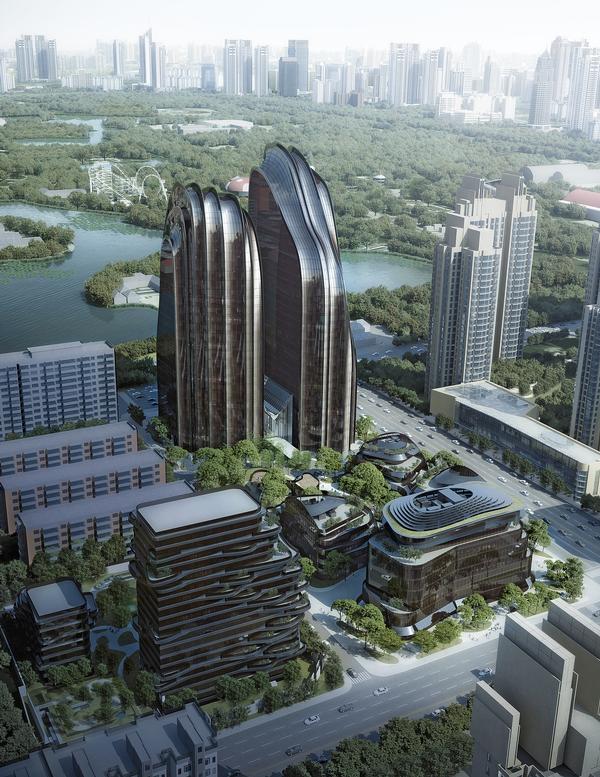
Bringing serenity to the city
The five star Beijing Conrad Hotel, which opened in 2013, was designed to “embed itself within the fabric of the rectilinear city much as a plant rises through the crack of a concrete sidewalk.” A sinuous 106m-high tower, the building acts as a transition between the serene setting of the nearby Tuanjiehu Park and the built-up terrain of the city’s Central Business District. The studio wanted to soften the rigidity of efficient and anonymous structures by creating something warm and memorable. With its changing curves, the building’s window openings shape the rooms “into bright and soft caves.”
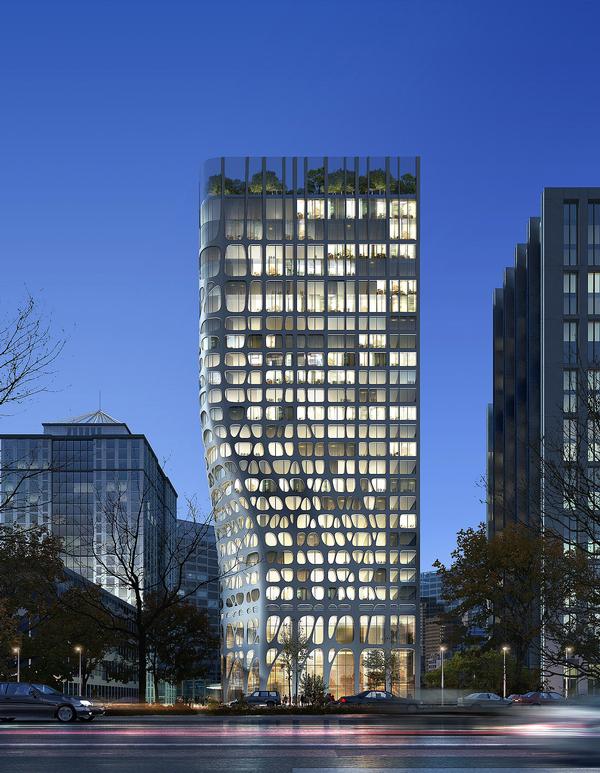
A museum that floats
Pingtan Art Museum, a spectacular floating cultural island, is proposed for China’s Fujian province. Rising dunes and caves would house the museum’s galleries, with the island linked to the mainland by an undulating pier. “The island is firstly a public space that is then turned into a museum,” said MAD. “The sea, the beach, the oasis and the slope all interconnect with each other, forming a harmonious capacious space with the mountains in the distance.” Covering a construction area of over 40,000sq m (430,500sq ft), it would be one of the largest privately-owned museums in Asia.
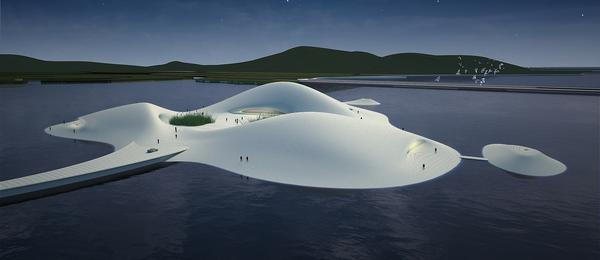
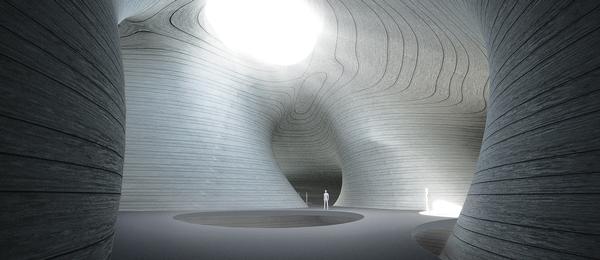
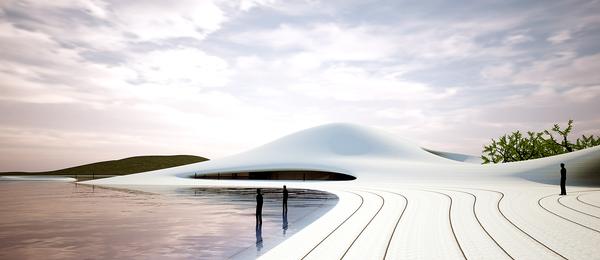
Houses that form a hill
MAD’s mission to create high-density, economically viable housing that is also architecturally innovative led to the design of Fake Hills; a project completed in 2015. This development, located in the coastal Chinese city of Beihai, sits on an 800m-long narrow oceanfront site. The fundamental geometry of the scheme combines two opposing typologies, the high rise and the groundscraper, resulting in the form of a hill. The continuous platform along the roof acts as a public space, with gardens, tennis courts and swimming pools on top of the man-made hills looking out towards the ocean.
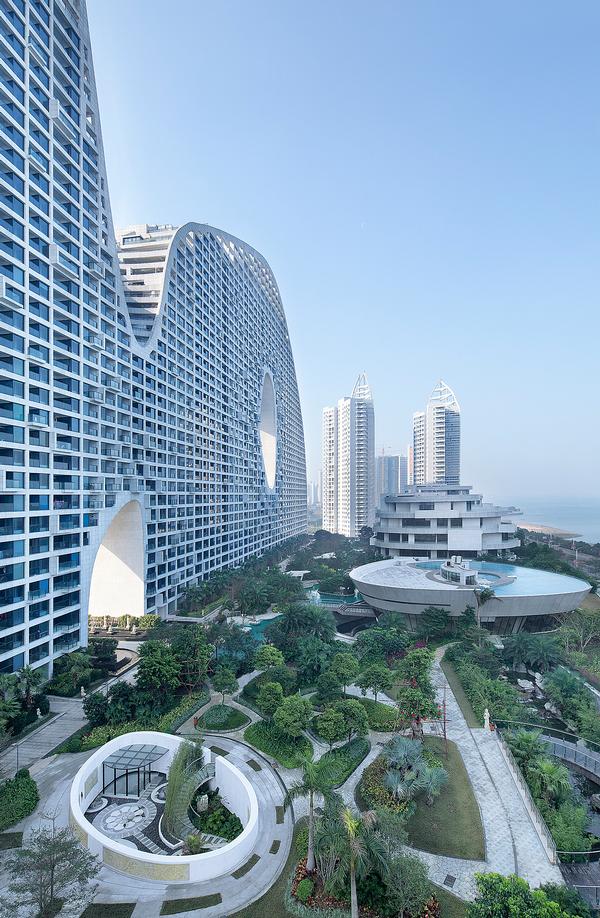
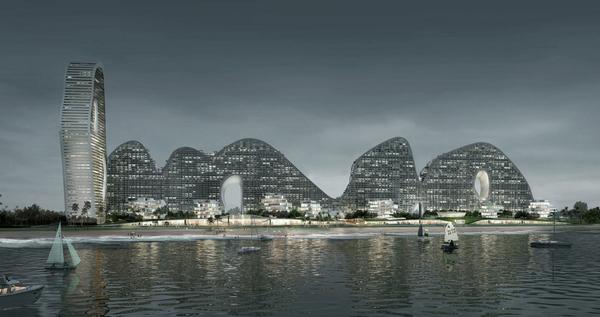
Case Study
Harbin Opera House
The opera house occupies a building area of approximately 850,000sq ft (79,00sq m). Inside, large transparent glass walls span the lobby, visually connecting the curvilinear interior with the sweeping exterior. Above, a supported crystalline ceiling is comprised of smooth and angular glass pyramids, referencing the snow and ice that covers the region in winter and allowing natural light to enter the lobby.
A swooping wooden staircase takes visitors from the lobby to the 1,600-capacity grand theatre, sculpted from Manchurian ash wood, and a smaller venue for audiences of 400. At the top of the building, both ticketholders and members of the public can access an open rooftop performance space with panoramic views of the city’s skyline and wetlands.
How did nature inspire the design?
As you can see, it looks like part of the texture of the landscape. It’s a bit strange; you don’t find this in the architectural world, as it hasn’t come from a computer. I wanted to make this building become part of the landscape. People who go there don’t want to see a box. With this design they arrive, see the river and the wetlands, and then they can continue their experience when they arrive in the building. It’s something new, something artificial, artistic and unique.
What was the biggest challenge with this project?
The challenge was how to make it an opera house, because the concept wasn’t related to the function. The design explores the local context and how humans interact with nature, but at the same time it had to be functional. It’s an opera house, and they always need a closed box – when you go in there you need to feel like you could be anywhere, because you’re entering a drama.
I think it’s important that we had a sequence between the nature outside and how it integrates into the building. So even inside the auditorium there are perfect landscaped shapes and we have natural light flooding in to create the connection to the outside. At the same time, it has to be really good visually and acoustically to perform its function. Getting that balance right was quite challenging.
What’s your favourite part of the Opera House?
The rooftop. Because you can see every part of the building apart from the rooftop. You have to be there to experience it. There’s a space for people to look at the sky, changing what is a very horizontal experience to a vertical one.
The sky is an extreme of nature. People don’t know much about it, so there is much more room for their imagination to take flight.
When you’re designing a public space do you start with the form or the function?
I would say we start from the experience we want to create. Controlling the complexity of the project is part of creating the experience. For example, we’re currently designing a philharmonic music hall in Beijing in a very busy commercial district. There are a lot of people, which is good for the circulation, but we want to create the experience of taking people to a different world through the architecture and music. I want to make people think they’ve arrived in another place. So we started by considering how to realise that experience. To do that we’ve created this translucent feeling, so you’ll be aware of where you are but will also be isolated from the context.
